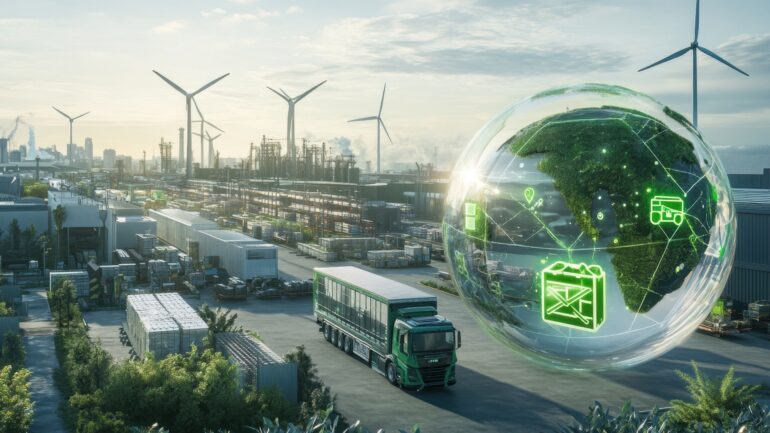The Real Engine Behind Sustainable Development

The move towards a sustainable future, vis-à-vis the realisation of Sustainable Development Goals (SDGs), is not just an ethically-dictated move, but an economically-compelled one. With the more conventional tools of foreign aid and climate action becoming increasingly less reliable, blended finance is becoming the necessary, versatile mechanism of rallying the massive amounts of private capital required.
We have talked about the SDGs for years as our version of the North Star – to which humanity can aspire as our strongest bet on a more equal, sustainable existence. However, the grim truth is an abominable gap between vision and action. The global deficit on financing the SDGs in developing countries had risen to an eye-watering $4.2 trillion dollars by 2020, up sharply on $2.5 trillion pre-pandemic.
This is not just a lacuna in funding; this is a systemic failure. Developed nations, for instance, royally failed to mobilize their 2009 promise of an annual $100 billion worth investment in climate action in developing countries by 2020. Given the current environment of rising geopolitical tensions, lingering macro constraints, and the alarming decline of the multilateral ideal, conventional foreign aid is hardly expected to post a recovery. The curtain is fast-closing on this dying act, and the spectators, human beings, are as confused as ever over what follows.
The Public Pocket against its Limitations, The Private Pocket against its Potential
The absurdity is staring: even as government budgets get smaller and development aid slashed more than ever, a huge sea of privately-owned funds remains relatively untapped. Only about 4% of the gargantuan $410 trillion of global private asset investing is in developing states (ex-China). The public sector, acting through its development finance institutions (DFIs) and multilateral development banks (MDBs), commits $240 billion per year as development finance but only catalyzes a mere $44 billion per year, or 1% of the needed investment in climate and SDGs. This is not only ineffective; this is a huge waste of resources.
The solution, therefore, is not more public money but rather an overhaul in the way we use the existing capital pools at our disposal. That leads us to blended finance: the purposeful deployment of public or philanthropic funds to catalyze and multiply the rates of investment in frontier markets by the business sector. It is more like a powerful wrench, instead of a silver bullet to fix a complex financial engine. And the good news? The engine is already humming.
In 2023 the blended finance market hit a five-year high with overall financing increasing by an impressive 71% in the period to 15 billion. This covered marquee transactions such as the SDG Loan Fund which invested $1.11 billion in issuing securities backed by energy infrastructure in 10 countries and the $410 million securities listing in Singapore by Bayfront Infrastructure Management. Blended finance has also demonstrated that it is far more resilient than the storm-tossed conventional development initiatives.
Why Capital Stalls
Some promising momentum notwithstanding, the road to unleashing the power of private capital is still chock-full of major obstacles, many of them products of an underlying language barrier and inherent disparities between the public and the private world. The requirements of fiduciary duties mean that the profile of risks and returns should be clear. In the case of private investors, however, the perceived risks of developing economies and emerging markets (EMDEs) regularly cause an unwillingness to invest.
Alarmingly, this problem is actively aggravated by a supposedly-neutral regulatory landscape. For example, Basel IV requirements need commercial banks to hold far more capital against ‘risky’ investments in EMDEs. Where a DFI may have rated a senior loan in a developing country at a 20-25% risk weight, a commercial bank with its hard-and-fast credit ratings and the ‘sovereign ceiling’ that limits project ratings to the country’s sovereign rating, may outrageously rate the same loan as 100% or higher risk weight. This renders long-tenor project finance transactions, which are so vital in infrastructure and energy in EMDEs, too expensive.
Similarly, International Financial Reporting Standard (IFRS) 9 requires banks to incur expected credit losses immediately, which amounts to disincentivizing lending to below-investment-grade EMDE assets due to the write-down requirement upon a loan origin. Even European insurers are experiencing the same type of headwinds under Solvency II, where risk-tiered blended structures can be erroneously interpreted as expensive securitizations. These rules, though meant to promote happy economic stability, have the unfortunate side effect of hopping up insurmountable obstacles against the centrally needed long-term global capital growth.
The issue is aggravated by the absence of granularity or transparency in data. Private investors are unable to access sufficiently complex and real-world information of historical performance, default rates, and recovery rates of projects at EMDEs. Whilst efforts such as the GEMs database are showing improvements in delivering aggregate data, the granularity required by rating agencies and private investors in order to more accurately model risk and ensure the calibration of capital allocation rules continues to be elusive. Such a data vacuum sustains a sense of greater risk than what is on the ground and often kills investment before it can even start.
Means to Scale
It is key that there be a multi-stakeholder effort to overcome such systemic impediments, a new form of translation facilitating the divide between developmental needs and investment needs. A blueprint may involve:
- Catalytic Deployment of Catalytic Capital: Public and philanthropic funds, especially the potential $13-15 billion a year available to spend on catalytic funding can unlock $286 billion in private capital, an amount seven times more than the current annual levels unlocked by the whole climate and development financing system.
What this implies is that MDBs and DFIs will have to give up on their mentality of domination in the public sector and truly become catalytic in getting out of the senior positions and taking strategic first-loss and mezzanine positions. Their shareholders also have to match incentives by connecting the concessional capital provision with the explicit targets of private sector mobilization.
- Regulatory Evolution: This is possibly the greatest of all the nuts to crack. Regulators and policymakers should take part in a policy discourse in supranational regulatory bodies to adjust rules of capital allocation. They must realize the actual risk of lenders will be reduced significantly by de-risking mechanisms like first-loss tranches, and should be accounted for by lower-weight risks. A multi-stakeholder platform to promote the blending of finance through the principles of the G20, as well as a formal guide in accessing this form of financing is critical in this regard.
- Radical Transparency and Data Harmonization: The development community needs to ensure timely and publicly available data on private sector mobilization rates, leverage ratios by category of market, and financial performance in terms of rate of returns, default and recovery. The empirical evidence may destroy the stereotype of excessive risk and can be used in the asset-liability research of institutional investors such as pension funds.
- Co-Designing Solutions: Early involvement in the process by private investors must be co-designed to align strategies with demands of their operations, limits and risk appetites. This partnership ethic, which experts hope to encourage out of the current “translators” who presently have a substantive feel of both the development impact and the financial gain, will naturally provide a stream of investments worthy of interest and corporation that are of a blended character.
Read more from the World Economic Forum here.


